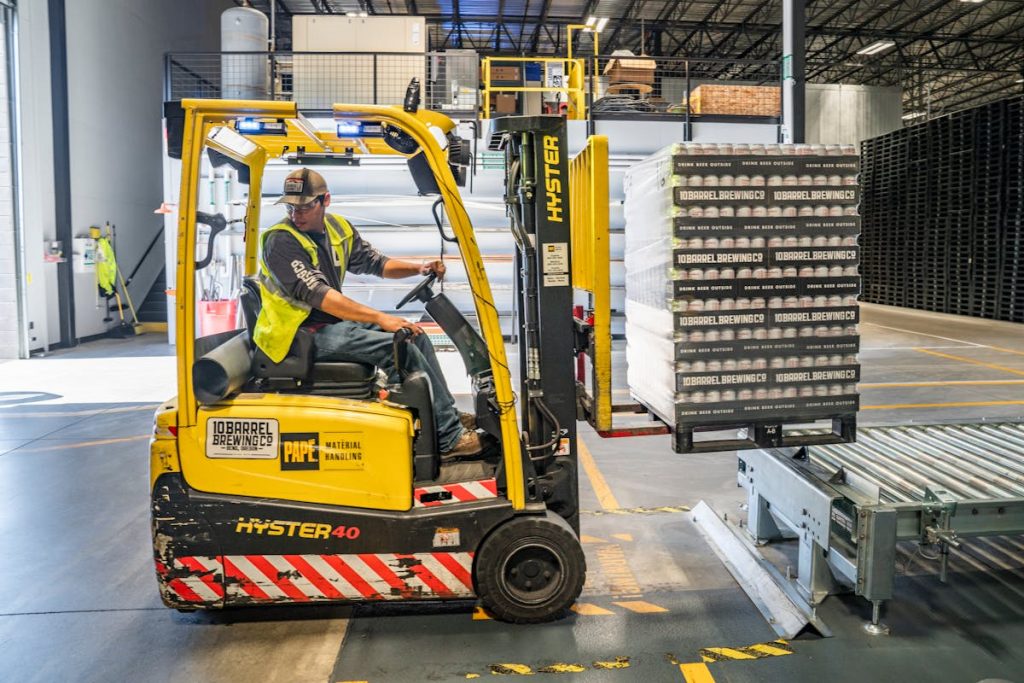- Optimize warehouse space and manage inventory with smart storage and accurate, regularly updated systems.
- Deploy automation and real-time tracking systems to enhance efficiency and reduce manual errors in warehouses.
- Invest in employee development through continuous training, a dedicated manager, and involvement in process improvements.
- Apply lean principles to streamline processes, eliminate waste, and address bottlenecks for increased operational productivity.
- Prioritize regular equipment maintenance and safety training to ensure a safe, efficient, and legally compliant warehouse environment.
Warehouses are at the heart of efficient supply chain management. Regardless of the industry, a well-oiled warehouse is pivotal in ensuring that goods flow smoothly from manufacturing plants to the hands of consumers. For business owners, especially those involved in e-commerce or product-driven operations, understanding and optimizing the warehouse environment is crucial for profitability and customer satisfaction. This article will explore five key strategies that can help transform your warehouse into a beacon of efficiency, enhancing every aspect of your business.
1. Optimize Layout and Organization
The physical layout and organization of your warehouse have a significant impact on day-to-day operations. A disorganized space leads to inefficiencies, from longer picking times to increased risk of errors. To optimize your layout, consider:
Utilization of Space
The space within a warehouse is a precious commodity. You can dramatically increase your storage capacity by adopting smart storage solutions like vertical racking systems and mezzanines and even utilizing the often-overlooked overhead space. Furthermore, the application of ‘first in, first out’ (FIFO) and ‘last in, first out’ (LIFO) methods based on your inventory can help you not just store more but manage it more effectively.
Efficient Inventory Management
Keep like items together, and ensure that fast-moving items are placed in locations that are easily accessible. Regular cycle counts and updates to your inventory management system will keep inventory levels accurate, allowing you to replenish stock quickly. Automated reorder reminders can further support this proactive approach to inventory management, minimizing stockouts and overstocking.
2. Implement Technology Solutions
Technology is a game-changer in the pursuit of a more efficient warehouse. By leveraging the right tools, you can reduce human error, increase the speed of operations, and make strategic decisions based on real-time data.
Automation Tools
High-tech solutions like automated storage and retrieval systems (AS/RS), conveyor systems, and robotics for tasks like picking and packing can greatly speed up warehouse tasks. They also deliver notable improvements in accuracy and can operate round the clock, minimizing the need for human intervention during non-peak hours.
Inventory Tracking Systems
Real-time, accurate data is the key to managing a successful warehouse. Implementing an advanced inventory tracking system allows you to monitor stock levels, track the movement of items, and forecast demand more effectively.
3. Focus on Employee Training and Engagement
It’s often said that employees are a company’s most valuable asset, and this is especially true in the warehouse setting. Employees who are well-trained and engaged will not only perform better but can also offer valuable insights into making processes more efficient.
Appoint a Warehouse Manager
A dedicated warehouse manager can be instrumental in leading operations and ensuring that employee training protocols are followed. They can also help create a culture of accountability and continuous improvement. If you don’t have the time to fulfill this role, consider hiring an experienced 3PL warehouse manager who can manage your warehouse effectively. They’ll bring industry best practices and expertise to the table, freeing you up to focus on growing your business.
Continuous Training Programs
Offer regular training on new equipment, updated processes, and any new technology introduced to the warehouse. Cross-training employees on multiple tasks can maintain productivity levels even during absenteeism. Investing in your team’s knowledge and skills can ensure that they feel motivated and equipped to handle the inevitable changes in business operations.
Employee Involvement in Process Improvement
Encourage your warehouse staff to provide input on how to improve processes. After all, they’re working on the front lines and likely have suggestions for streamlining operations. Employees who feel their contributions are valued are more likely to take an active role in improving the warehouse’s efficiency.
4. Streamline Processes and Workflows
Efficiency is all about doing more with less, and that’s the aim of process and workflow streamlining in the warehouse. For one, lean principles – which focus on eliminating waste and maximizing value – can be applied to warehouse operations in various ways, from reducing unnecessary movements and increasing standardization to optimizing storage space. Bottlenecks in workflows can also be identified and addressed, curbing inefficiencies that lead to delays.
5. Prioritize Safety and Maintenance
A safe and well-maintained warehouse isn’t just about meeting legal requirements; it’s a core part of an efficient operation.
Regular Equipment Inspections
Create a schedule for regular maintenance checks for all warehouse equipment, including forklifts, conveyors, and automated systems. Preventative maintenance can reduce downtime and extend the life of your machinery while ensuring a safer work environment for your employees.

Safety Protocols and Training
Warehouse work can be hazardous, so it’s crucial to have safety protocols in place. Regular training can equip your employees with the knowledge they need to work safely. Consider regular safety meetings to maintain awareness and engagement with safety standards.
The efficiency of your warehouse impacts every part of your business, from customer satisfaction to costs and revenue. By optimizing layout and organization, harnessing technology, focusing on your employees, streamlining processes, and prioritizing safety, you ensure that your warehouse operates at peak performance, day in and day out. Take action on these strategies, and you’ll soon see a transformation in your warehouse and overall business operations. With an efficient warehouse, you can stay ahead in the market, delight customers, and secure your position as a top-tier business in your industry.



